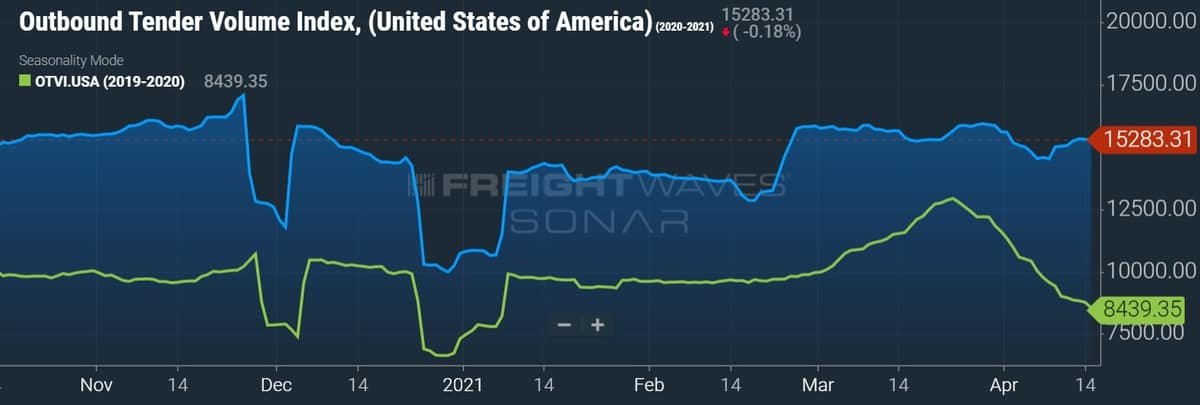Freight expenditures surged with another step higher in volumes, according to March data released by Cass Information Systems (NASDAQ: CASS) on Friday. The Cass Freight Index posted cycle highs with the expenditures’ subindex displaying a new record.
The proxy for freight payments was 27.5% higher year-over-year and 7.9% higher than February. This was the third all-time high recorded in the dataset over the past four months. The report said that the increase in the overall index was equally driven by volumes and rates.
“Strong momentum continued in freight rate trends, with this month nearly off the chart, and we sense an axis adjustment on the way,” stated the report’s author, ACT Research’s Tim Denoyer. “This acceleration suggests Q2 y/y comparisons will be in the 40%-50% range, compared to the shutdown.”
Freight shipments snapped back during March following severe storms that disrupted many transportation networks in February. The shipments subindex was up 10% year-over-year and up 5.8% from February (+3.4% seasonally adjusted).
The March volume reacceleration in the truckload market was displayed daily in FreightWaves’ Outbound Tender Volume Index. The recovery began in the third week of February as carriers started working through freight backlogs created by the storms. By month’s end, volumes had surged to levels seen during the 2020 peak season.

“This freight volume improvement is consistent with our optimistic outlook, supported by inventory levels, consumer trends, and the backlog of freight anchored off U.S. ports,” said Denoyer.
He noted that supply chain risks — the Suez Canal blockage and semiconductor shortages — are still in play in the near term but said that if the shipments index follows normal seasonality, it will be up 30% year-over-year in the second quarter.
The lofty expectations should be balanced with the realization that the year-over-year comparisons are very easy due to the onset of the pandemic, which sent both subindexes plummeting 20% in the April-to-June 2020 period.
Implied freight rates, or expenditures divided by shipments, increased 15.8% year-over-year as the spend component outpaced the volumes component again. Seasonally adjusted implied rates were up 3.5% sequentially, a trend expected “to press higher near-term, as strong freight demand meets shortages of both drivers and trucks,” Denoyer added.
The TL linehaul index beat the prior record set in October 2018. The index rose 10.1% year-over-year and 2% sequentially on a seasonally adjusted basis. March marked the ninth consecutive sequential increase.
J.B. Hunt Transport Services (NASDAQ: JBHT) reported a 28% year-over-year increase in revenue per loaded mile, excluding fuel surcharges, in its truck segment Thursday after the market close. Contractual rates were up 14%.
Data used in the Cass indexes is derived from freight bills paid by Cass, a provider of payment management solutions. Cass processes $28 billion in freight payables on behalf of more than 8,000 subscribers annually.







